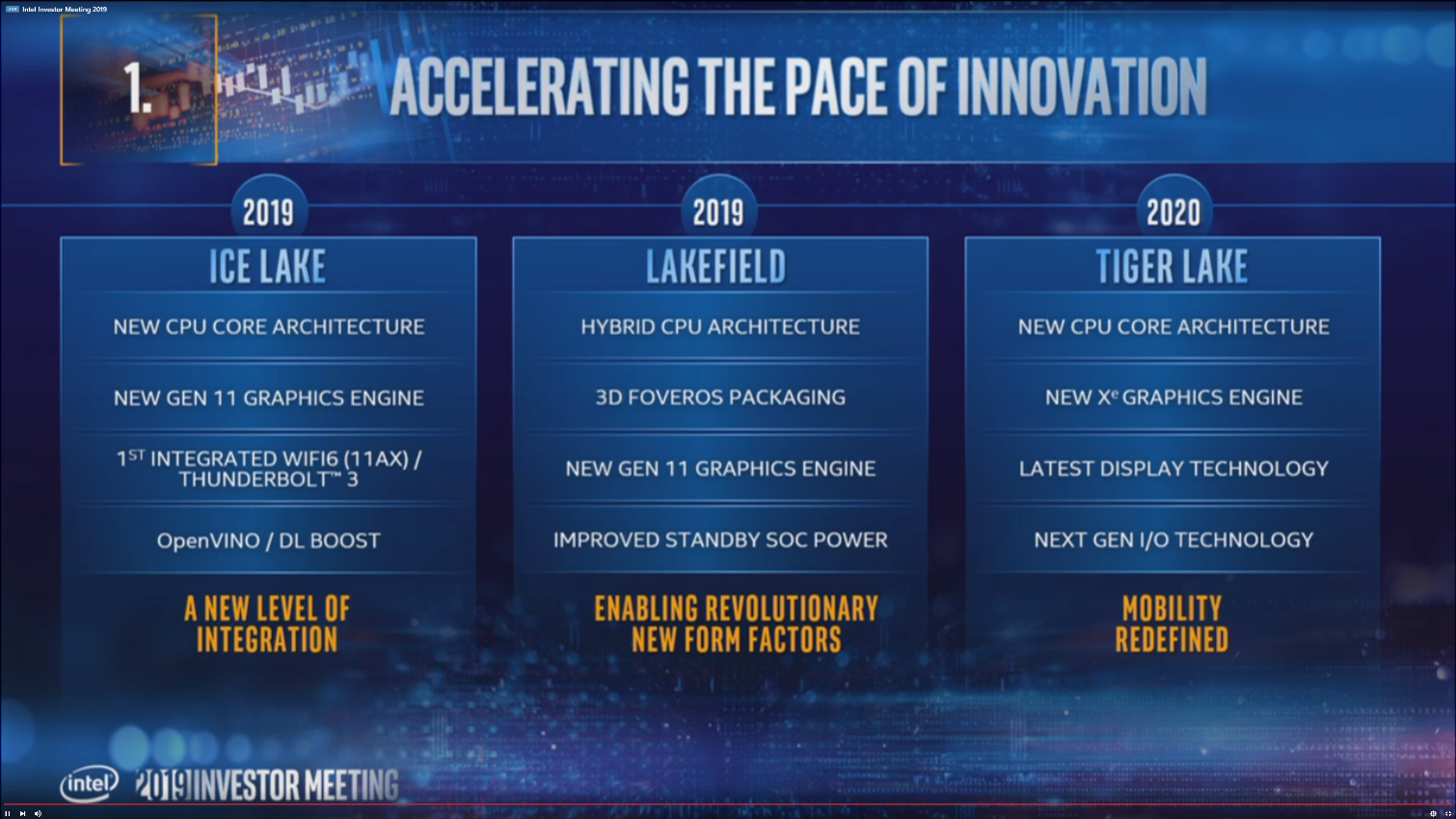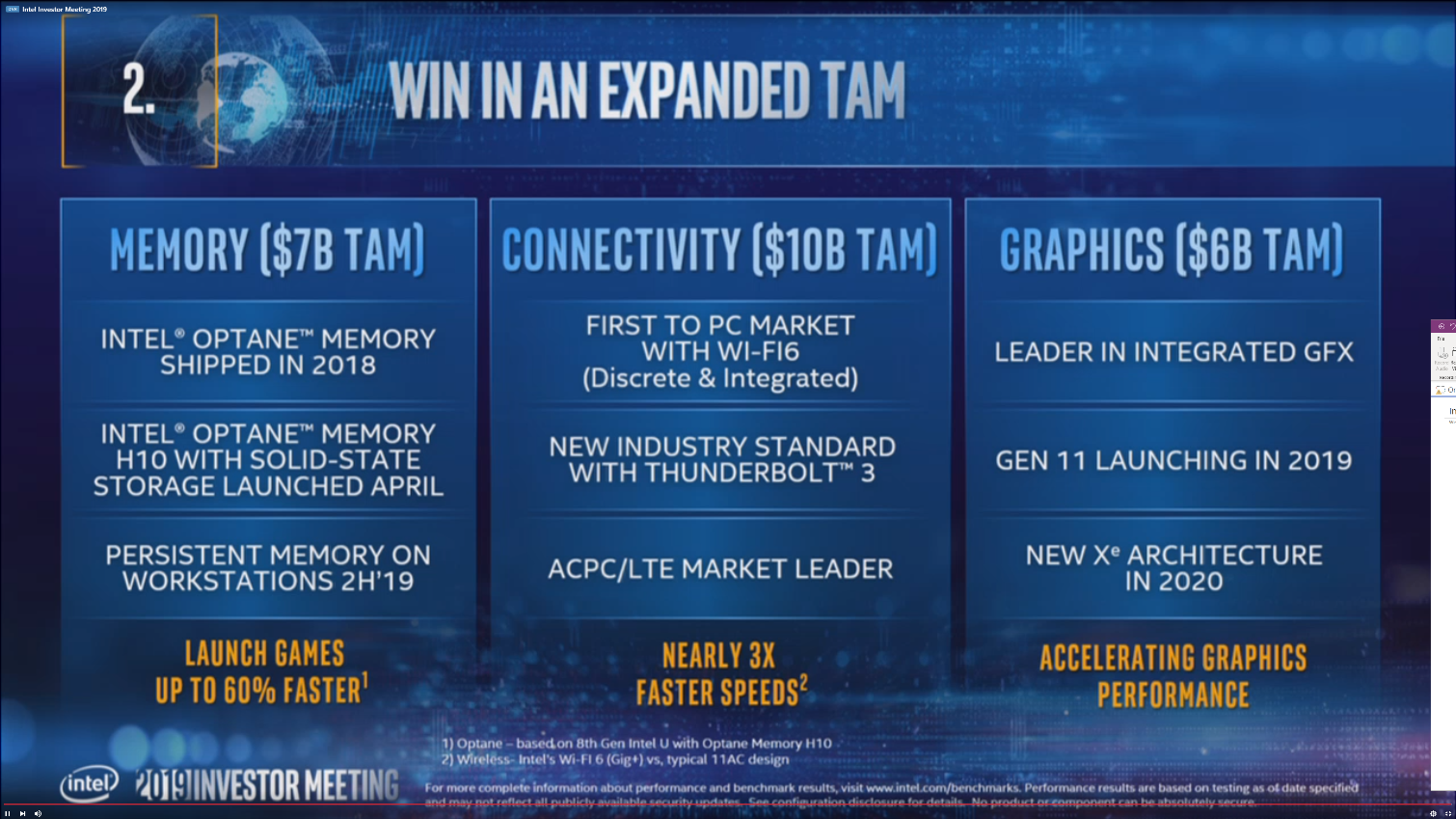Intel Announces 10nm Tiger Lake Processors to Arrive in 2020
Intel made a wide range of announcements today at its 2019 Investor Day, including the unexpectedly-quick jump to the 7nm process, but Gregory Bryant, the head of Intel's client team, made yet another announcement: Intel's new 10nm Tiger Lake processors will come to market in 2020.
This isn't entirely surprising, as these processors popped up on a recently leaked roadmap that indicated a 2020 release date. According to that information, these chips will come as four-core models that are confined to the Y- and U-Series for laptops.
Bryant said Tiger Lake has a completely new core architecture but did not elaborate. We believe these processors will come with the Willow Cove core architecture. Bryant also said the new processors could push an 8K monitor or multiple 4K displays, which comes courtesy of the Xe Graphics engine. Although Bryant did not specify, Intel's first integrated Xe Graphics will come with the Gen12 moniker.
Bryant noted that the company has working silicon running both Windows and Chrome, indicating these processors are in the final stages of development.
While technical details are slight, Bryant shared some performance data. According to Intel, Tiger Lake offers up to four times the graphics performance of Whiskey Lake processors, but it's notable that the comparison is of a 15W Whiskey Lake processor to a 25W Tiger Lake chip, meaning this is somewhat of a lopsided comparison in terms of power consumption.
Intel also claimed Tiger Lake offers twice the performance of a 5W Amber Lake processor, but again this is compared to a higher-powered 9W Tiger Lake processor.
The quadrupled encode performance bullet point is interesting, as it compares a 4K60 encode with Whiskey Lake to an 8K60 encode on Tiger Lake. Unfortunately, the test notes do not list the respective power envelopes for this test.
Get Tom's Hardware's best news and in-depth reviews, straight to your inbox.
The "AI performance" bullet point refers to a like-for-like comparison of 15W Ice Lake and Whiskey Lake processors. The improvement in wireless speeds refers to product gains between Intel's Wi-Fi 6 and a competing 11AC chip, not the actual CPUs.
Official details are still slight, but we're told Intel will share more information shortly. We'll update as necessary.

Paul Alcorn is the Editor-in-Chief for Tom's Hardware US. He also writes news and reviews on CPUs, storage, and enterprise hardware.


